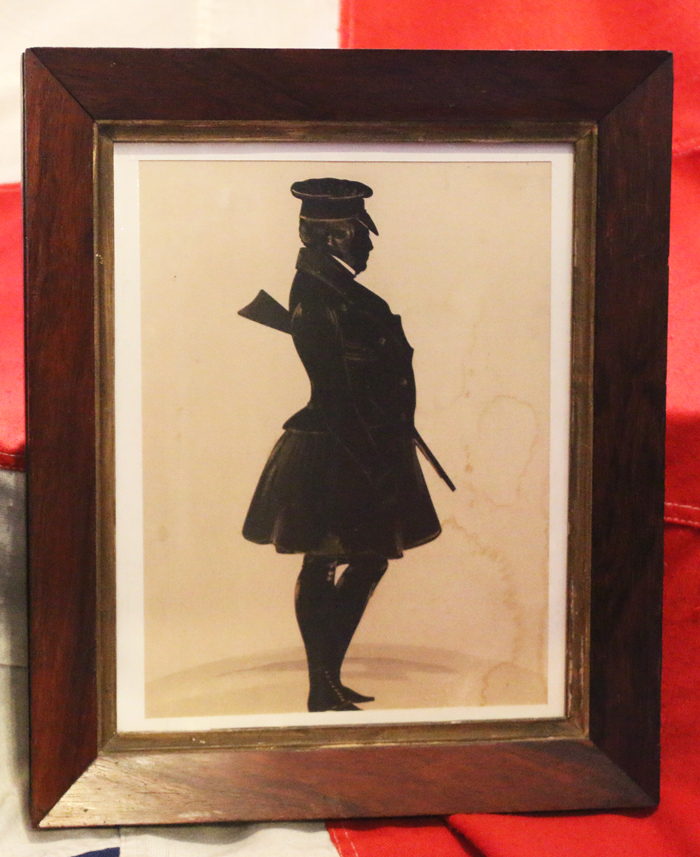Another Fabulous Christmas Gift Idea. A Superb Pair of Regency Silhouette Portraits of a Scottish Lady and Gentleman, Possibly by George Atkins
Circa 1815 to 1830 British School. The gentleman is holding his fouling piece, and wearing a kilt. The lady is holding what appears to be her prayer book. Both silhouettes are hand cut black paper aplied to an off-white card backing, emphasized with gold shadow highlights. Original Regency rosewood frames. A silhouette is the image of a person, animal, object or scene represented as a solid shape of a single colour, usually black, with its edges matching the outline of the subject. The interior of a silhouette is featureless, and the silhouette is usually presented on a light background, usually white, or none at all. The more expensive versions could have a gold highlight such as these have. The silhouette differs from an outline, which depicts the edge of an object in a linear form, while a silhouette appears as a solid shape. Silhouette images may be created in any visual artistic media, but were first used to describe pieces of cut paper, which were then stuck to a backing in a contrasting colour, and often framed.
Cutting portraits, generally in profile, from black card became popular in the mid-18th century, though the term silhouette was seldom used until the early decades of the 19th century, and the tradition has continued under this name into the 21st century. They represented an effective alternative to the portrait miniature, and skilled specialist artists could cut a high-quality bust portrait, by far the most common style, in a matter of minutes, working purely by eye. Other artists, especially from about 1790, drew an outline on paper, then painted it in, which could be equally quick.
From its original graphic meaning, the term silhouette has been extended to describe the sight or representation of a person, object or scene that is backlit, and appears dark against a lighter background. Anything that appears this way, for example, a figure standing backlit in a doorway, may be described as "in silhouette". Because a silhouette emphasises the outline, the word has also been used in the fields of fashion and fitness to describe the shape of a person's body or the shape created by wearing clothing of a particular style or period. 10.5 x 12.5 inches framed. Picture in the gallery of a drawing a Silhouette by Johann Rudolph Schellenberg (1740?1806). Light staining to the gentlemans white backing paper.
Code: 23078
595.00 GBP






